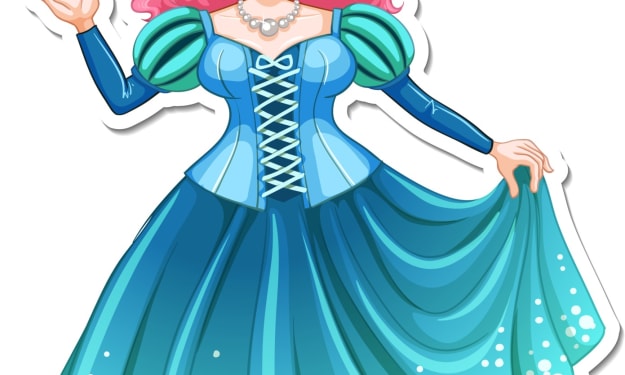
I have already talked about “At the Back of the North Wind”, by the Scotsman George MacDonald, written in 1871, which has Death as its protagonist. The Lilith saga, composed around 1895 and declined in the three novels “Beyond the Looking Glass”, “Lilith” and “The House of Regret”, takes up the figure of the female demon associated with the wind. The protagonist of the trilogy is Lilith, from Akkadian Lil-itu, lady of the air, a creature connected to the storm and the cat. In Mesopotamian culture, Lilith was a demon, whom the Jews borrowed during the Babylonian captivity and transformed into Adam’s first wife, disowned for refusing to obey her husband. She has always had negative characteristics, of a nocturnal, witchy, adulterous and lustful feminine. In the nineteenth century, however, with the emancipation of women, she came to represent the strong woman who no longer submits to men, she is re-evaluated by modern neo-pagan cults and assimilated to the Great Mother.
In the first book, the protagonist, Vane, finds himself in a parallel world, following Mr Raven, a disturbing librarian capable of transforming himself into a raven, who we will later discover to coincide with Adam. Here he will experience all sorts of adventures, he will meet monsters, birds, children, skeletons, beautiful women, fabulous animals. Many topoi of fantastic literature are present. The first is the magic mirror, the device capable of acting as a link between parallel universes, such as the wardrobe from “The Chronicles of Narnia” — and not surprisingly, C.S. Lewis was MacDonald’s greatest admirer. Other recurring images are the battle of the skeletons (see Tolkien’s paths of the dead, films like “The Mummy”), the dead asleep in the crypt, the dark and menacing forest (see Dark Wood, Mirkwood, Fangorn Forest.)
But the main meeting will be the one with Lilith, a beautiful but evil woman, the prototype of all previous and subsequent vampires. If the Jewish Lilith used the nocturnal pollutions of young men to generate jiin, MacDonald’s behaves like a leech that bites and bleeds to keep itself strong. Her beauty is her strength but also her sin. Contemplating herself satisfies her, as happens to Snow White’s perfidious stepmother, but it amplifies her self-centeredness, distances her from Good, makes her self-referential and evil.
Like the mythical Lilith, she too poses a threat to children. And the community of innocent little ones (reminiscent of Diamante, the Child of God from “At the Back of the North Wind”) is a peculiar feature of the saga. But Lilith is also the embodiment of misogyny, of the fear that the male has of the woman, of the one who can envelop him, bewitch him, suck his soul away together with the semen. She is a belle dame sans merci not unlike Rider Haggard’s Ayesha.
Unlike Tolkien, who did not like the Scottish writer for this very reason, MacDonald’s fantasy — theologian, preacher and mystic — has a strong allegorical — religious connotation. In the treatise “The fantastic imagination”, MacDonald argues that a well-constructed story must also have a meaning, not necessarily obvious to the author, and modifiable according to the cultural level of the readers. It is no coincidence that Auralia edizioni, directed by Marco Gionta, speaker of Vatican radio and an expert on topics related to Christian spirituality, such as angelic traditions, is republishing the Lilith saga. The whole saga, and, more generally, all the matter narrated by MacDonald, is based on the dichotomy Good / Evil, Light / Darkness, Damnation / Redemption, White Leopard / Spotted Leopard. Sin and forgiveness are the two main themes, closely connected to each other. Sin exists, it is part of reality and creation. To overcome it, you need to know and experience it.
Vane’s sin is obstinacy, the presumption of being able to do without others; that of Lilith, more serious, is having done without God, thinking that she has imagined herself. Lilith lives immersed in the darkness of her selfishness, closed in on herself, blind to the needs of others, capable even of killing her daughter. The place she created for herself is hell itself, or rather the anguished desert of her sinful mind. Lilith is beautiful because she was thought of by God but she has a stain on her hand, an indication of the advancing corruption, of the evil that consumes her (like the portrait of Dorian Gray.) The leopard covered with macules is the definitive form of evil.
“This is not about the leopard but about the woman,” she said, “and she won’t go until she devours you to the heart and your beauty slips away from you through the open wound.”
A white worm will be needed, a biblical snake which, like Shannara’s sword, will slip into her bosom and show her to itself, revealing the abyss of her perversion, the horror of what is hers. But, unlike Terry Brooks’ magical object, her worm will work in her an admittedly religious conversion. Only in this way will Lilith be able to surrender to good, allow herself to be redeemed, accept death, even lose a piece of herself. But from this loss a new beginning will spring, life will be reborn, the water of atonement and healing will flow.
“The Evil you have planned” Adam resumed “you will never realize, Lilith, because God — and not evil — is the Universe, but it will end: what will become of you when Time has vanished in the dawn of the eternal morning? Repent, I beg you and become an angel of God again! “
MacDonald’s eschatology does not conceive of eternal damnation. Everything returns, sooner or later, to the Creator, to the one who thought of the creature.
Even the protagonist is not free from sin, he is selfish and, by his own admission, greedy, impulsive, foolish. “You will be dead for as long as you refuse to die,” the crow, aka Mr Raven, aka Adam tells him. That is: you will be a sinner until you operate a catharsis, until you accept the loss of what you were previously to transform yourself into something new, pure, healed. The concept that you have to die to really live is fundamental. Only by surrendering, abandoning oneself to sleep in the cold chamber of death, will one be able to dream and then be reborn to true and everlasting life.
There is only one moral law, it cannot be reinvented or overturned, not even in a “secondary or sub created” world. Where Tolkien invents an atheistic universe, based on secular values such as heroism, sacrifice, loyalty, MacDonald offers us a powerful religious nucleus which, if it starts quietly with the first book, becomes more and more explicit as the story proceeds. There are numerous biblical allusions, even glaring ones, such as the presence of Adam and Eve, the Eden in which innocent creatures (the Children) live, the Shadow of the tempting serpent, the city of God at the end. The events narrated also have several similarities with Dante’s journey, but without the realistic, as well as allegorical, power of the Florentine. MacDonald’s is a sweetened Dantesque universe, languid and revisited in a Pre-Raphaelite key.
The defects of the book are, in our opinion, two: the feeling that, at least at the beginning, it proceeds by accumulation, letting itself be guided through the chapters only by the fervid and gothic imagination of the author, and the lyrical impenetrability of the dialogues, due to the undeniable influence of the language of the Holy Scriptures.
About the Creator
Patrizia Poli
Patrizia Poli was born in Livorno in 1961. Writer of fiction and blogger, she published seven novels.
Enjoyed the story? Support the Creator.
Subscribe for free to receive all their stories in your feed. You could also pledge your support or give them a one-off tip, letting them know you appreciate their work.






Comments
There are no comments for this story
Be the first to respond and start the conversation.